- Home
- Quizzes
- My Quiz Activity
- Newsletters
- Sports Betting
- MY FAVORITES
- Add Sports/Teams
- SPORTS
-
NFL
- NFL Home
- Arizona Cardinals
- Atlanta Falcons
- Baltimore Ravens
- Buffalo Bills
- Carolina Panthers
- Chicago Bears
- Cincinnati Bengals
- Cleveland Browns
- Dallas Cowboys
- Denver Broncos
- Detroit Lions
- Green Bay Packers
- Houston Texans
- Indianapolis Colts
- Jacksonville Jaguars
- Kansas City Chiefs
- Las Vegas Raiders
- Los Angeles Chargers
- Los Angeles Rams
- Miami Dolphins
- Minnesota Vikings
- New England Patriots
- New Orleans Saints
- New York Jets
- New York Giants
- Philadelphia Eagles
- Pittsburgh Steelers
- San Francisco 49ers
- Seattle Seahawks
- Tampa Bay Buccaneers
- Tennessee Titans
- Washington Commanders
-
MLB
- MLB Home
- Arizona Diamondbacks
- Atlanta Braves
- Baltimore Orioles
- Boston Red Sox
- Chicago White Sox
- Chicago Cubs
- Cincinnati Reds
- Cleveland Guardians
- Colorado Rockies
- Detroit Tigers
- Houston Astros
- Kansas City Royals
- Los Angeles Angels
- Los Angeles Dodgers
- Miami Marlins
- Milwaukee Brewers
- Minnesota Twins
- New York Yankees
- New York Mets
- Oakland Athletics
- Philadelphia Phillies
- Pittsburgh Pirates
- San Diego Padres
- San Francisco Giants
- Seattle Mariners
- St. Louis Cardinals
- Tampa Bay Rays
- Texas Rangers
- Toronto Blue Jays
- Washington Nationals
-
NBA
- NBA Home
- Atlanta Hawks
- Boston Celtics
- Brooklyn Nets
- Charlotte Hornets
- Chicago Bulls
- Cleveland Cavaliers
- Dallas Mavericks
- Denver Nuggets
- Detroit Pistons
- Golden State Warriors
- Houston Rockets
- Indiana Pacers
- Los Angeles Clippers
- Los Angeles Lakers
- Memphis Grizzlies
- Miami Heat
- Milwaukee Bucks
- Minnesota Timberwolves
- New Orleans Pelicans
- New York Knicks
- Oklahoma City Thunder
- Orlando Magic
- Philadelphia 76ers
- Phoenix Suns
- Portland Trail Blazers
- Sacramento Kings
- San Antonio Spurs
- Toronto Raptors
- Utah Jazz
- Washington Wizards
-
NHL
- NHL Home
- Anaheim Ducks
- Arizona Coyotes
- Boston Bruins
- Buffalo Sabres
- Calgary Flames
- Carolina Hurricanes
- Chicago Blackhawks
- Colorado Avalanche
- Columbus Blue Jackets
- Dallas Stars
- Detroit Red Wings
- Edmonton Oilers
- Florida Panthers
- Los Angeles Kings
- Minnesota Wild
- Montreal Canadiens
- Nashville Predators
- New Jersey Devils
- New York Islanders
- New York Rangers
- Ottawa Senators
- Philadelphia Flyers
- Pittsburgh Penguins
- San Jose Sharks
- Seattle Kraken
- St. Louis Blues
- Tampa Bay Lightning
- Toronto Maple Leafs
- Vancouver Canucks
- Vegas Golden Knights
- Washington Capitals
- Winnipeg Jets
- NCAAF
- NCAAM
- Boxing
- Entertainment
- Lifestyle
- Golf
- MMA
- Soccer
- Tennis
- Wrestling
- More Sports
- RESOURCES
- My Account
- YB on Facebook
- YB on Twitter
- YB on Flipboard
- Contact Us
- Privacy Policy
- Terms of Service
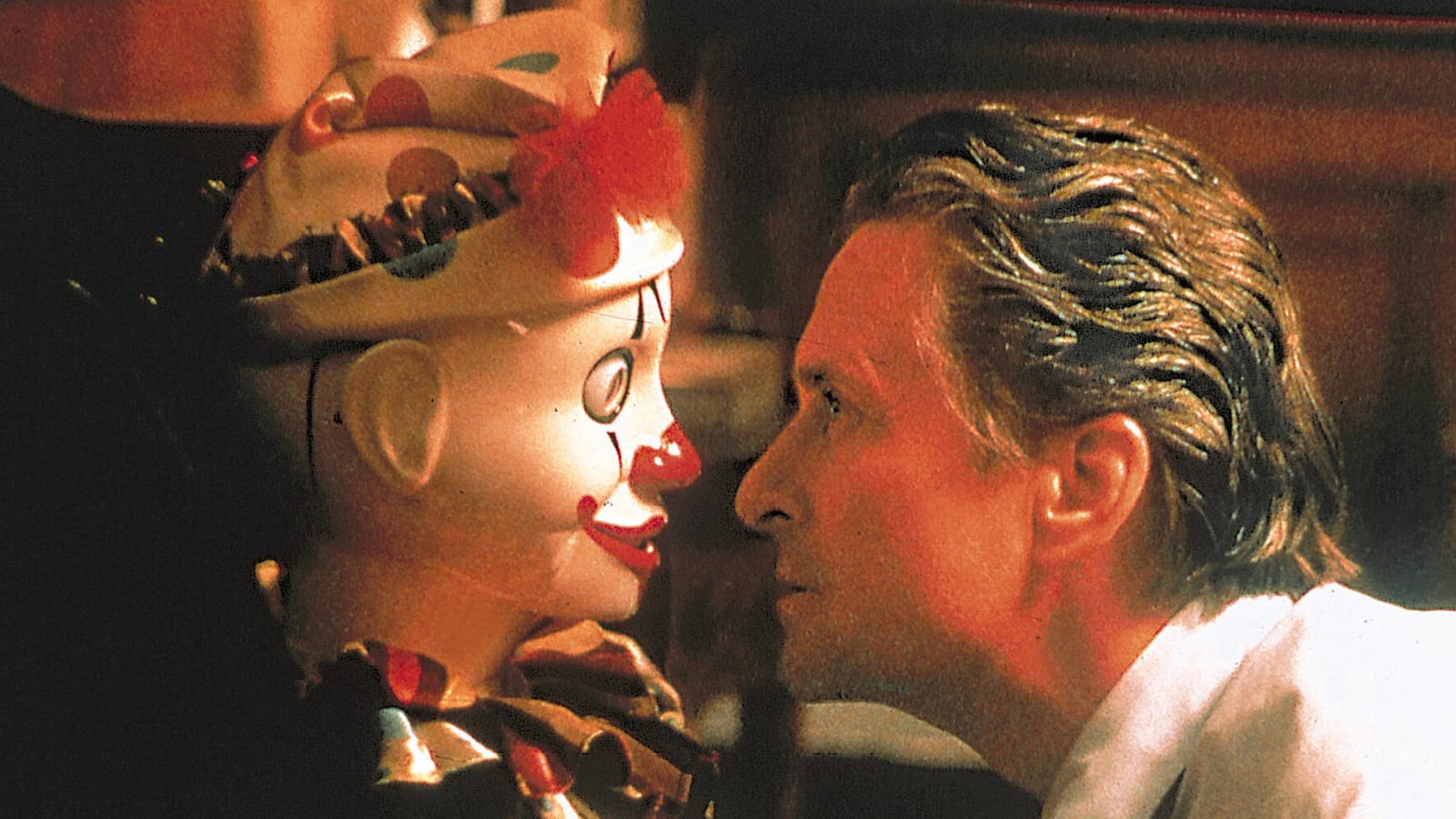
However you slice it, a twist ending to a film is a big swing. If you pull the rug out from under your audience and it doesn’t work or it feels self-satisfied, you will disappoint many people. On the other hand, a successful twist ending can give a movie iconic status. For better or worse, these are the most memorable twist endings to movies. Oh, and spoilers to follow.
“The Sixth Sense” (1999)

It’s perhaps the quintessential twist in a film, the one that made the career of M. Night Shyamalan, for better or worse. A critical hit and commercial success, to this day when people want to facetiously spoil a twist ending, they’ll let you know that Bruce Willis is dead the whole time in “The Sixth Sense.” Or, really, like 95 percent of the time.
“The Usual Suspects” (1995)
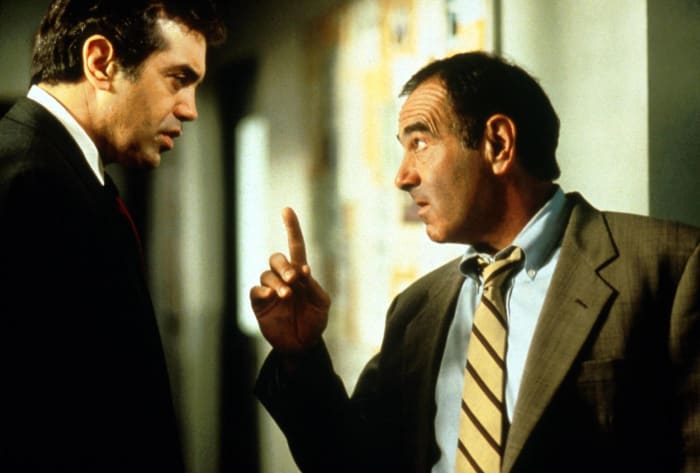
A surprise hit that unexpectedly grabbed cultural cache with a cast and director that weren’t well known at the time. Of course, “The Usual Suspects” now has to deal with some heavy cultural baggage, based on allegations against said director and one notable member of the cast. “The Usual Suspects” features a figure known as Keyser Soze looming over the whole film, and in the end it turns out that Verbal Kint, a seemingly meek cog in the machine of the crimes involved, was Soze the whole time.
“Fight Club” (1999)

The ebb and flow of the cultural consensus on “Fight Club” can give you whiplash, but it’s a cult classic to be sure. It also features a twist that is a big ask for the audience, but plenty of people don’t mind, clearly. Brad Pitt’s Tyler Durden? Yeah, it turns out he doesn’t really exist, and he’s just a fabrication out of the mind of Edward Norton’s unnamed narrator.
“Memento” (2000)

Christopher Nolan loves messing with time, and our sense of both time and place in his stories. Not everybody loves that, but it really became his calling card with “Memento.” The dark noir starring Guy Pearce as a severe amnesiac incapable of forming new memories delivers a bombshell at the end. At the beginning of the film we see Pearce kill the man he believed killed his wife, but it turns out that man is a cop who has effectively used Pearce to wipe out criminals by telling him over and over that different men are the one responsible. Pearce, in turn, uses a brief moment of clarity to make a note for himself that, once he forgets it, he knows will lead him to kill Joey Pants’ John G.
“12 Monkeys” (1995)
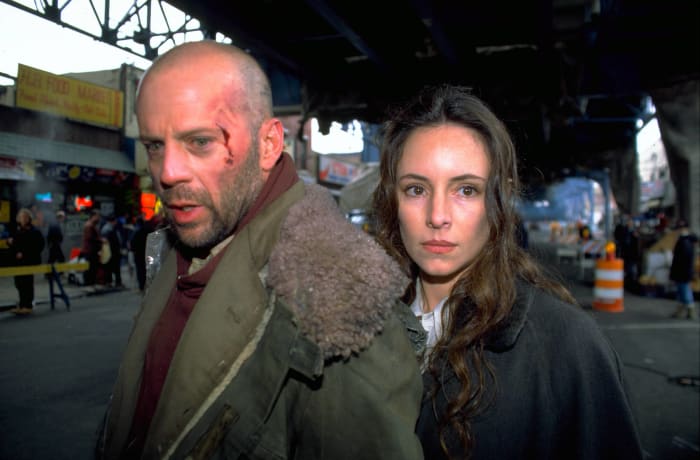
First, shout out to Chris Marker, director of the 1962 short “La Jetee” that inspired “12 Monkeys.” That includes introducing the twist. Bruce Willis is haunted by a memory from his youth of a man being shot down at the airport. Willis’ James Cole is sent back in time to try and figure out the source of the virus that wiped out almost all of human life. It turns out that man gunned down at the airport? That was Cole, and his younger self saw his older self killed.
“Identity” (2003)

So far, we've been dealing with largely-reasonable twists from films that are pretty good at the very least. Then, there’s “Identity.” This would have been a forgettable bad thriller (from a good director in James Mangold) if not for the twist. That’s why people remember, and not in a good way. Ten strangers are stranded at a motel in Nevada. They turn out not to be real people, but different personalities of a murderer on death row. Now, we find this twist out before the end, and the personalities act with sentience as they try to find the murderous personality to kill it. Then, we get a second twist at the end. With the belief that the murderous personality is dead, the killer’s taken off death row and placed in psychiatric care. Ah, but it turns out the murderous personality is alive. It was…the kid! What a twist (not really).
“The Prestige” (2006)

Yes, another Nolan film, but the twist is distinct enough from “Memento” that “The Prestige” belongs here as well. Also, we should say twists. There are two twists at the end of “The Prestige,” one fairly obvious, if effective, and the other a surprise. At the beginning of the film, Christian Bale’s magician sees Hugh Jackman’s magician drowning in a tank of water, and he is executed for murder. After this is when the two twists drop. The obvious one is that Bale was actually playing two magicians, identical twins, allowing the surviving twin to get revenge on Jackman. Wait, how is Jackman alive? Well, it turns out he pulled off his amazing trick using a duplicating machine invented by Nikola Tesla, so every night he created an exact double for the trick (which he, in turn, drowned immediately after the trick was completed).
“Psycho” (1960)

Alfred Hitchcock was not messing around when it came to his, frankly, lurid potboiler of a film. “Psycho” isn’t really all that different on paper from the kind of movie Vincent Price would star in, save for the fact it was directed by the “Master of Suspense.” Hitchcock was insistent audiences not spoil the twists of “Psycho,” and also said nobody would be admitted late. First, it’s kind of a twist that Marion Crane, the ostensible lead, is murdered halfway through the film. Then, there is the twist ending. Norman Bates’ mother is not alive, but just a corpse in a rocking chair. Instead, Norman has taken on the persona of his dead mother.
“Planet of the Apes” (1968)
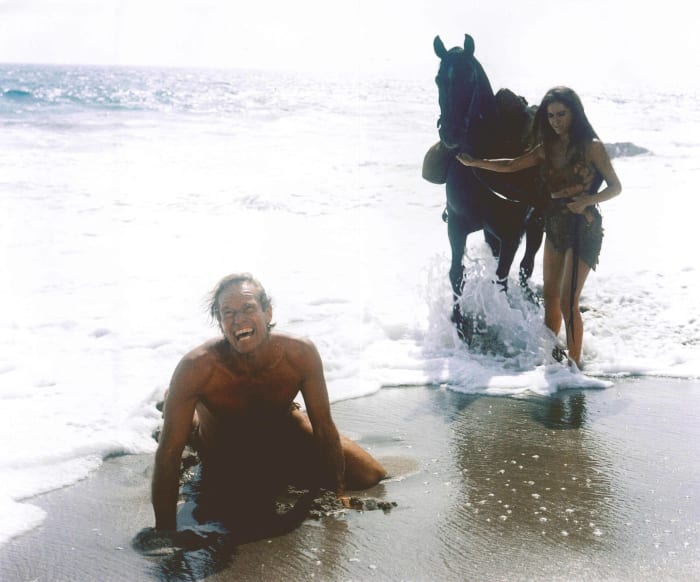
Before “The Sixth Sense,” “The Planet of the Apes” was probably the go-to reference for a twist ending. Charlton Heston, playing an astronaut, believes he has landed on a planet where anthropomorphic apes have become the most-advanced species, and they have subjugated the human equivalent on this planet. Then, Taylor sees it on the beach: The Statue of Liberty, half buried in the sand. He was on Earth all along, and had traveled through time to a future where certain maniacs had blown it all up. Damn them.
“The Empire Strikes Back” (1980)

All these years, and prequels, later, it’s no longer a surprise to most viewers of the second “Star Wars” film the genealogy of Darth Vader and Luke Skywalker. In fact, most of the talk about the big moment is the exact phrasing used by Vader. However you slice it, it turns out Vader did not kill Luke’s father. No, he is Luke’s father.
“Black Swan” (2010)

Darren Aronofsky has made some weird, dreamlike films, and none is weirder than “Black Swan,” which won Natalie Portman an Oscar. Portman plays a ballerina losing her grip on reality as she struggles with competing for the lead role in “Swan Lake.” Nina, Portman’s character, believes she has stabbed Lily, Mila Kunis’ character, to death with a shard of glass. She returns to performing, even envisioning herself becoming the Black Swan, but when she heads back to her dressing room to change, her grip on reality returns, and she realizes she actually stabbed herself in the stomach with the glass. And yet, she returns to the stage to finish the performance. It was perfect.
“No Way Out” (1987)

It’s one of the last Cold War thrillers that was released during the Cold War proper. Kevin Costner and Gene Hackman star, with the former playing a Navy man who becomes the eyes and ears of Hackman’s Secretary of Defense. There are worries about a mole or sleeper agent within the U.S. government. In the end, it turns out Costner was the mole, a Russian sleeper agent raised in America to make him the ultimate spy.
“Jacob’s Ladder” (1990)

It was all a dream. That’s a common trope of many TV shows. Of course, in a TV show, that can serve as one episode, a chance for writers to stretch their legs (or fill out a season lacking in plot ideas). For films, though, it’s a bolder swing. “Jacob’s Ladder” wasn’t afraid to take that swing. In the end, it turns out to be a dream, or maybe more accurately a hallucination, of a dying man.
“Friday the 13th” (1980)

We arguably get two twists at the end of this iconic slasher flick. Or, perhaps, one is more of a reveal, while the other is definitely a twist. First, we find out that the killer tormenting Camp Crystal Lake is the mother of Jason Voorhees. The definite twist, though, is when the Final Girl believes herself safe, only for Jason Voorhees, inexplicably, to rise out of the lake to grab her.
“Don’t Look Now” (1973)

It’s a weird twist ending. “Don’t Look Now” is mostly an ethereal drama, or thriller, about a married couple dealing with the grief of their daughter’s death. Donald Sutherland’s character keeps feeling like he is seeing a child, perhaps the ghost of his daughter, in the world. Then, um, it turns out to be a murderous dwarf who cuts his throat with a meat cleaver. Well, that’s definitely a twist.
“The Cabin in the Woods” (2012)
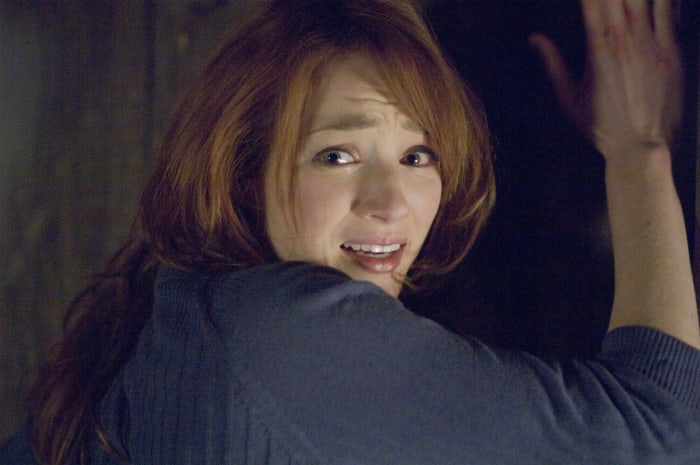
Right away, we find out there is a secret organization working to sacrifice teenagers to assorted monsters, a meta twist on horror films from a horror film in “The Cabin in the Woods.” That should be enough, but then there is another twist at the end. Sigourney Weaver appears as “The Director,” and she explains the teens are killed to appease the “Ancient Ones.” The two surviving teens refuse the sacrifice, and one of the Ancient Ones, it would seem, destroys the planet.
“The Game” (1997)

One more David Fincher, as he also directed “Fight Club.” “The Game” is a super-twisty thriller. A wealthy, sleazy banker, played by Michael Douglas naturally, gets a gift from his brother consisting of a certificate to an immersive game company. The banker believes his application to have been rejected, but then it seems the company has gone ahead with “The Game” anyway, but is this company actually sinister? Douglas comes to believe it is not a game, and even thinks he has shot his brother and tries to leap to his death. He lands on a big air cushion. It was all a game, and the shooting of his brother part of it.
“Orphan” (2009)

It’s become an infamous-enough twist that “Orphan” got a belated prequel. A couple believe they have adopted a child from an orphanage. Things start to awry, and then we find out the truth. Esther, the child, is actually Leena, a 33-year-old woman who is posing as a kid. Also, she’s a murderer, so that’s not great.
“Remember Me” (2010)

Many bad twists are found in horror films. Some of them, though, come from bad romantic dramas as well. Robert Pattinson, in the midst of his peak “Twilight” fame, stars as Tyler. There is some family drama, and also some romantic drama. The night after Tyler and his romantic interest profess their love, he heads to work. His father takes Tyler’s sister Caroline to school, informing Tyler that he will be late to work. Caroline’s teacher then writes the date on the board. It’s September 11, 2001, and Tyler works in the World Trade Center. Yes, that is the twist of “Remember Me.”
“What Lies Beneath” (2000)

Let’s cleanse the palate of that “Remember Me” ending with a successful twist from a pulpy thriller. Famously, Robert Zemeckis began shooting “Cast Away,” and then and then had to wait for Tom Hanks to lose weight and grow out his hair and beard. During the hiatus, he directed an entire movie, “What Lies Beneath.” Michelle Pfeiffer has a seemingly nice marriage to Harrison Ford, a respected professor. Pfeiffer is feeling the presence of a ghostly apparition. It turns out that Ford had an affair with a student, and at first tries to claim that she took her own life, but then Ford, having paralyzed Pfeiffer with a drug, admits that he did kill Madison, the young woman. As Ford attempts to drown Pfeiffer, he sees Madison’s face and is so startled he knocks himself unconscious, allowing Pfeiffer to avoid drowning. But wait, there’s more! Pfeiffer tries to escape in a car, but Ford catches up, and they end up in the lake where Ford had drowned Madison. As Ford tries to drown his wife, he’s grabbed by…the ghost of Madison. Pfeiffer escapes, Ford drowns, the end. Now that’s a thriller with a twist.
Chris Morgan is a sports and pop culture writer and the author of the books The Comic Galaxy of Mystery Science Theater 3000 and The Ash Heap of History. You can follow him on Twitter @ChrisXMorgan.
More must-reads:
- 23 films that were overlooked because of Barbenheimer
- Popular books that were made into terrible movies
Trending in Entertainment
Customize Your Newsletter
 +
+
Get the latest news and rumors, customized to your favorite sports and teams. Emailed daily. Always free!
Use of this website (including any and all parts and
components) constitutes your acceptance of these
Terms of Service and Privacy Policy.

